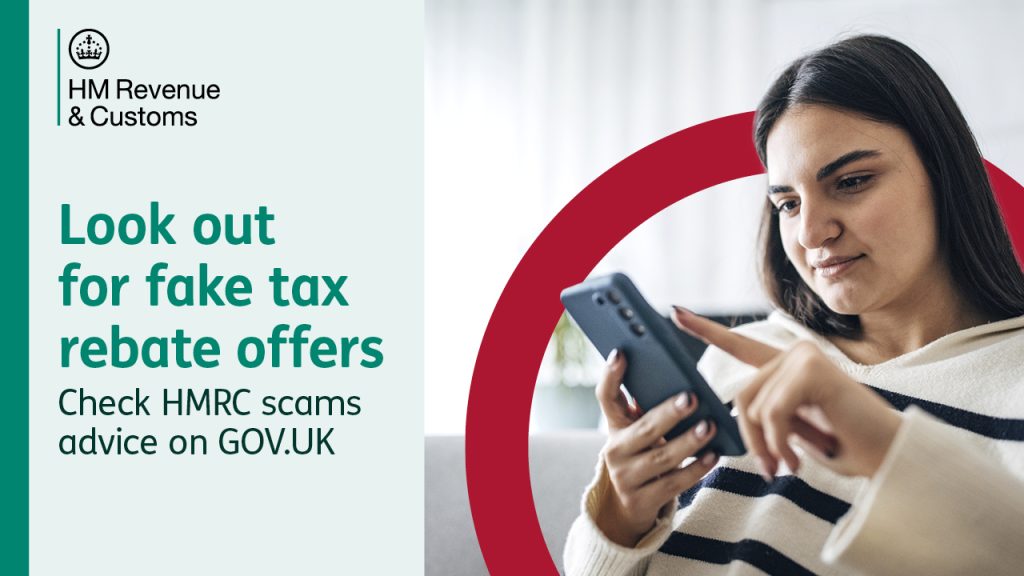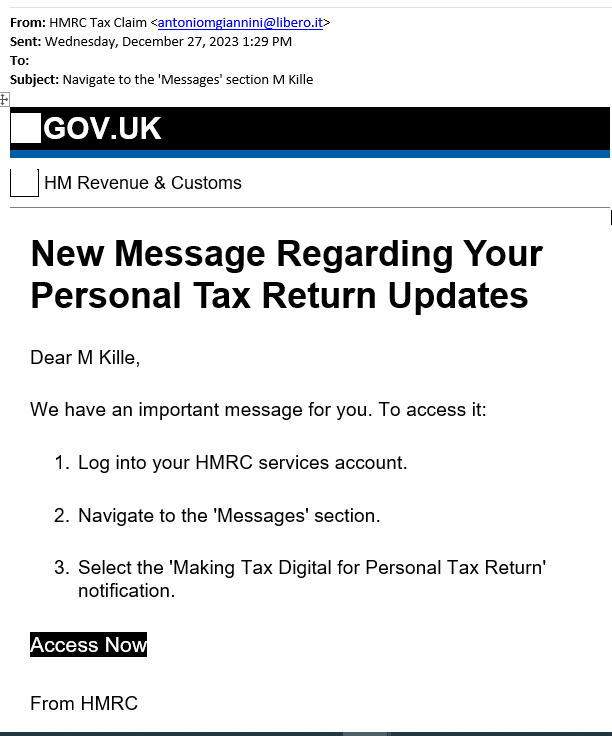Warning to Self Assessment customers as scam referrals exceed 200,000
🗓 15/02/2024

With the Self Assessment tax deadline behind us, HM Revenue and Customs (HMRC) is warning people to be wary of bogus tax refund offers.
Fraudsters could set their sights on Self Assessment customers, with more than 11.5 million submitting a tax return by last month’s deadline.
Taxpayers who completed their tax return for the 2022 to 2023 tax year by the 31st January deadline might be taken in by an email, phone call or text message offering a tax rebate. These phishing scams are designed to use personal details for selling on to criminals, or to access people’s bank accounts.
HMRC responded to 207,800 referrals from the public of suspicious contact in the past year to January – up 14% from the 181,873 reported for the previous 12 months. More than 79,000 of those referrals offered bogus tax rebates.
Kelly Paterson, HMRC’s Chief Security Officer, said: “With the deadline for tax returns behind us, criminals will now try to trick people with fake offers of tax rebates.
“Scammers will attempt to dupe people by email, phone or texts that mimic government messages to make them appear authentic.
“Don’t rush into anything, take your time and check HMRC scams advice on GOV.UK.”
HMRC will not email, text or phone a customer to tell them that they are due a refund or ask them to request a refund.
Customers receive repayments into their chosen bank account, and can see any transactions in their online HMRC account and in the HMRC app.
Customers can help fight phishing scams by reporting any suspicious communications to HMRC:
- forward emails to phishing@hmrc.gov.uk
- report tax scam phone calls to HMRC on www.gov.uk
- forward suspicious texts claiming to be from HMRC to 60599
In the last year to January HMRC also reported 26,443 malicious web pages to internet service providers to be taken down. This is a 29% increase from the 20,385 referred by HMRC for removal the previous year. These sites aim to deceive taxpayers and steal their personal information or money.
They copy the design and branding of genuine websites so criminals can trick people into giving away their personal details. This information is then used to access people’s bank accounts or sold on the web.

Photo: An example of recent scam
Photo Credit: HMRC

